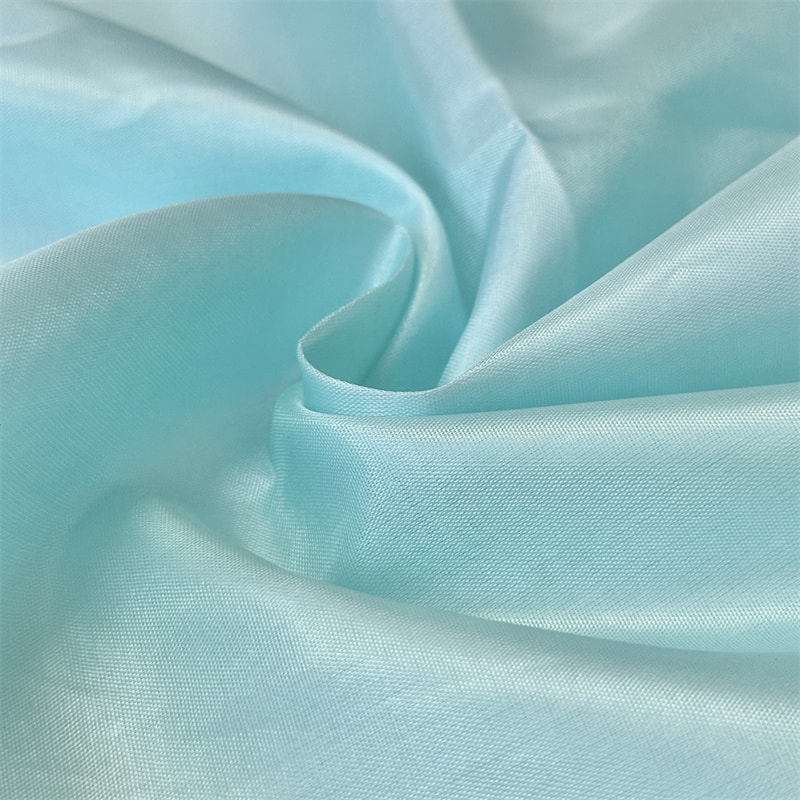Silk has long been revered for its luxurious texture, sheen, and overall elegance. However, its high cost and delicate nature have made it less accessible for many consumers. Enter imitation silk fabric, a remarkable alternative that offers the same smooth, lustrous feel of silk but at a fraction of the price. This fabric has become a popular choice in the textile industry, finding its place in everything from fashion to home décor.
Although imitation silk lacks the natural protein fibers found in true silk, modern textile technology allows for the creation of fabrics that are almost indistinguishable from their luxurious counterpart. The benefits of imitation silk go beyond its visual appeal, offering practical advantages such as increased durability and ease of care.
There are several types of imitation silk fabrics, each with its unique characteristics and uses. Some of the most common types include:
Satin: Satin is a smooth, glossy fabric with a reflective surface that closely resembles silk. It can be made from a variety of fibers, but polyester satin is one of the most common forms of imitation silk. Satin is often used in evening gowns, bridal wear, and high-fashion garments.
Charmeuse: Charmeuse is a lightweight, silky fabric with a soft, flowing drape. It has a high-gloss finish and is frequently used in evening wear, lingerie, and accessories. Charmeuse fabrics can be made from polyester, acetate, or rayon fibers, offering a luxurious feel at an affordable price.

Rayon: Rayon, often referred to as "artificial silk," is one of the earliest synthetic fabrics created to imitate silk. Rayon is known for its softness, drape, and sheen, making it a popular choice for clothing, especially dresses, blouses, and skirts. It is made from cellulose fibers, which are derived from wood pulp or cotton.
Nylon: Nylon is another synthetic fabric that can be made to mimic silk. It is known for its strength, elasticity, and resistance to abrasion, making it ideal for activewear and outerwear. Nylon imitation silk fabrics are also used in accessories such as scarves and handbags.
While real silk is undeniably beautiful, imitation silk offers a number of practical benefits that make it a popular choice in various applications. Some of the key advantages of imitation silk fabric include:
Affordability: One of the most significant advantages of imitation silk is its affordability. Natural silk can be expensive due to the labor-intensive process of harvesting silk fibers, whereas synthetic fibers like polyester and rayon are much cheaper to produce. As a result, imitation silk provides a budget-friendly option without sacrificing the luxurious appearance of silk.
Durability: Unlike real silk, which is delicate and prone to damage, imitation silk is generally more durable. It is less likely to tear, fray, or lose its shape, making it a more practical choice for everyday wear. It is also less sensitive to moisture, meaning it doesn't require the same careful handling as silk.
Easy Care: Silk fabrics often require dry cleaning or delicate washing, which can be a hassle for everyday garments. Imitation silk, on the other hand, is typically machine washable or can be cleaned with less special care. This makes it much more convenient for consumers who want the look of silk without the high-maintenance requirements.
Versatility: Imitation silk fabrics are available in a wide range of colors, patterns, and textures, making them incredibly versatile. Whether you're looking for a smooth, shiny surface or a more matte finish, there's an imitation silk option to suit your needs. This versatility makes imitation silk ideal for fashion, home décor, and even upholstery.
Imitation silk is used in a wide variety of industries due to its versatile properties and luxurious appearance. Some common applications include:
Fashion: Imitation silk is widely used in the fashion industry for creating affordable yet elegant garments. Dresses, blouses, skirts, and scarves made from imitation silk have a luxurious look without the steep price tag of real silk.
Home Décor: This fabric is often used in home décor items such as curtains, bedspreads, pillowcases, and upholstery. The glossy finish and soft texture of imitation silk add a touch of elegance to any room.
Lingerie and Sleepwear: Thanks to its soft feel and smooth surface, imitation silk is frequently used to make lingerie, nightwear, and robes. It provides the same sensual experience as real silk, but without the fragility.
Accessories: Imitation silk is also used in a variety of accessories such as scarves, headbands, and handbags, offering a stylish and affordable way to add luxury to everyday outfits.
As technology advances, the quality of imitation silk continues to improve. Innovations in fiber technology have made it possible to create even more realistic versions of synthetic silk, with enhanced breathability, moisture-wicking properties, and environmental sustainability. Additionally, with increasing demand for sustainable and cruelty-free products, imitation silk is likely to play an even more significant role in the textile industry.


 中文简体
中文简体 Español
Español











